Downsforce - flame trap, pipe mine and yet more trenches
Posted: 14 December 2008 23:10
I spent the morning up on the Downs in an area occupied by a company of Downsforce troops, looking for more trenches, a flame trap and a Canadian pipe mine.
I've been ill yet again (a hacking cough this time) which has knocked me flat the past few days, but I summoned up the strength to get some fresh air.
The company locality spanned a vital road that ran though to Downsforce's rear, hence the importance of protecting it.
My first discovery of the day was a slit trench (below) on what was probably the defensive perimeter of the position; a useful indicator.
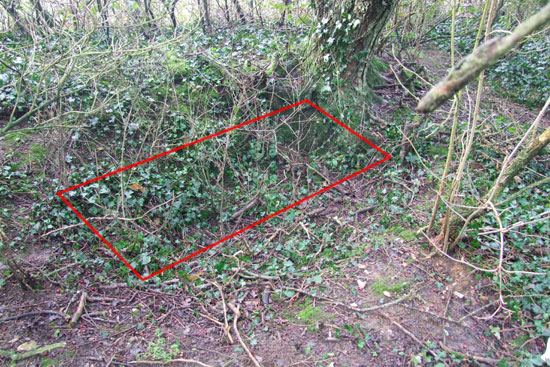
I then went in search of the flame trap and pipe mine. I'm not certain the pipe mine was ever installed, as the defence scheme I got this information from only records the fact that the site was in preparation.
The barrel flame trap seems to have been very close to where the pipe mine was supposed to have been and I find it hard to believe that two such defences would be so close together; detonating the pipe mine would potentially trigger the flame trap too.
The photo below shows the approximate location of the flame trap; the report I have on local flame traps states that this one was "no good - should be abandoned."
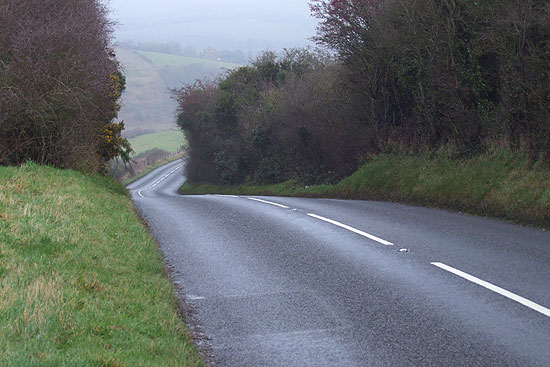
I moved further down the road and chanced upon another outpost; again this seems to mark the northern edge of the perimeter.
On high ground overlooking the road, these three trenches are in a good position.
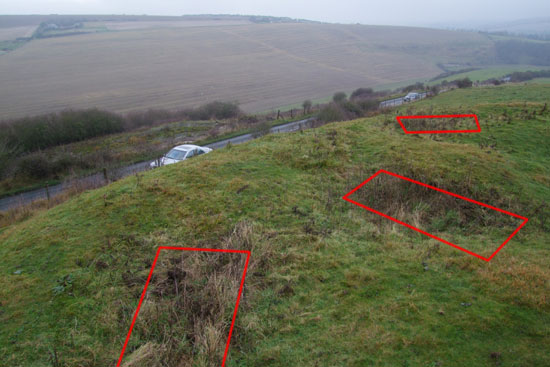
Finding no further evidence at this location, I then drove a few miles to another part of Downsforce's territory.
The vegetation is wonderfully low, and previously overgrown positions are now becoming more visible - or they would have been had it not been so foggy up on the high ground. The trenches shown below are ones I recorded some time ago, but only now are they discernible in the same photograph; previous attempts resulted in boring photos of long grass.
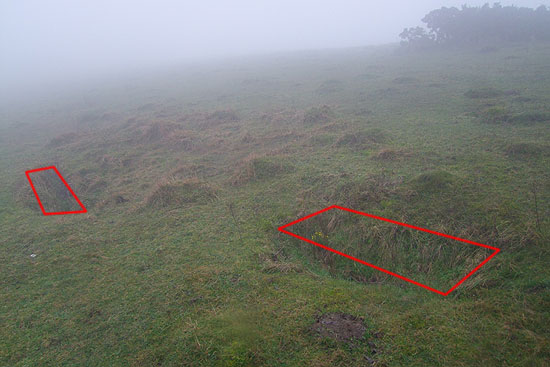
I also managed to see into a trench that I already knew and gain some insight into its construction. I had only found this trench originally by a couple of angle iron pickets used to hold the revetment in place, but the low vegetation revealed a corner I hadn't previously seen. The fact that I had to use flash in broad daylight indicates just how foggy it was.
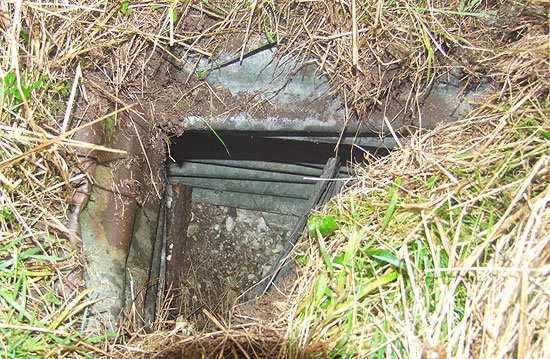
I wasn't only just revisiting known trenches; I also managed to record four new ones. Three of these were "possibles" initially located last week, but a quick investigation was enough to satisfy me that they were trenches. This was done with the tape measure; all three were just dish-shaped indentations in the ground with no ironwork visible, but they were all 180cm long; the standard slit trench length.
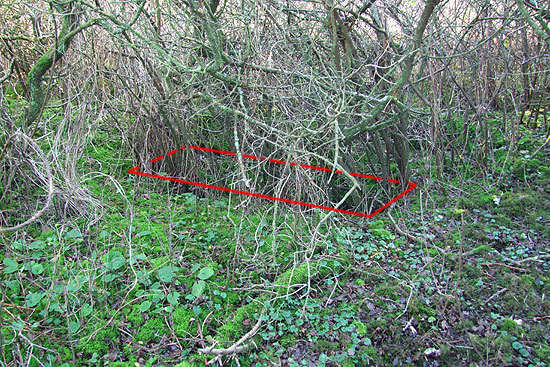
These new trenches have extended the boundary of the position in this area; I'm pretty certain there'll be more to find amongst the undergrowth.
I've lost count of the total number of trenches I've now found; I need to catch up on some paperwork over the Christmas holiday.
- Pete

Email:
Blog Latest

Bishopstone reveals its pillbox secrets
18 October 2021

Pillbox or Observation Post?
10 June 2020

Uncovering the hidden secrets of a pillbox
8 June 2019

Review of 2018
31 December 2018

Wartime Christmas in East Sussex (2)
24 December 2018
Jargon-buster
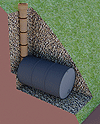
Barrel flame trap
Incendiary booby-trap comprising a battery of oil drums dug in and concealed, usually in a roadside bank and detonated remotely as an enemy vehicle passes it. Also known as a flame fougasse.
Canadian pipe mine
A speciality of Canadian Engineers, the pipe mine was designed to render roads impassable to enemy vehicles by blowing a large crater in them. Lengths of 3-inch steel pipe were inserted under a road either by using pipe-pushing equipment or by slant-drilling. The pipes were then packed with explosive and left in place until the road needed to be destroyed. Large amounts of pipe mines were used in a cross-hatch pattern under airfields, to destroy runways. The pipe mine was also known as McNaughton Tubing, after General McNaughton, commander of the Canadian Corps in the UK.
Defence scheme
A military plan of defence for a specified area. Defence Schemes were issued at numerous levels. Defence Schemes were later known as Plans to Defeat Invasion on the orders of General Montgomery.
Slit trench
Small, narrow trench designed to provide protection against shrapnel and other battlefield hazards. Technically distinct from a weapon pit (which was intended soley as a defensive position) slit trenches were also used as defence works.
This site is copyright © Peter Hibbs 2006 - 2024. All rights reserved.
Hibbs, Peter Downsforce - flame trap, pipe mine and yet more trenches (2024) Available at: http://www.pillbox.org.uk/blog/216591/ Accessed: 25 April 2024
The information on this website is intended solely to describe the ongoing research activity of The Defence of East Sussex Project; it is not comprehensive or properly presented. It is therefore NOT suitable as a basis for producing derivative works or surveys!